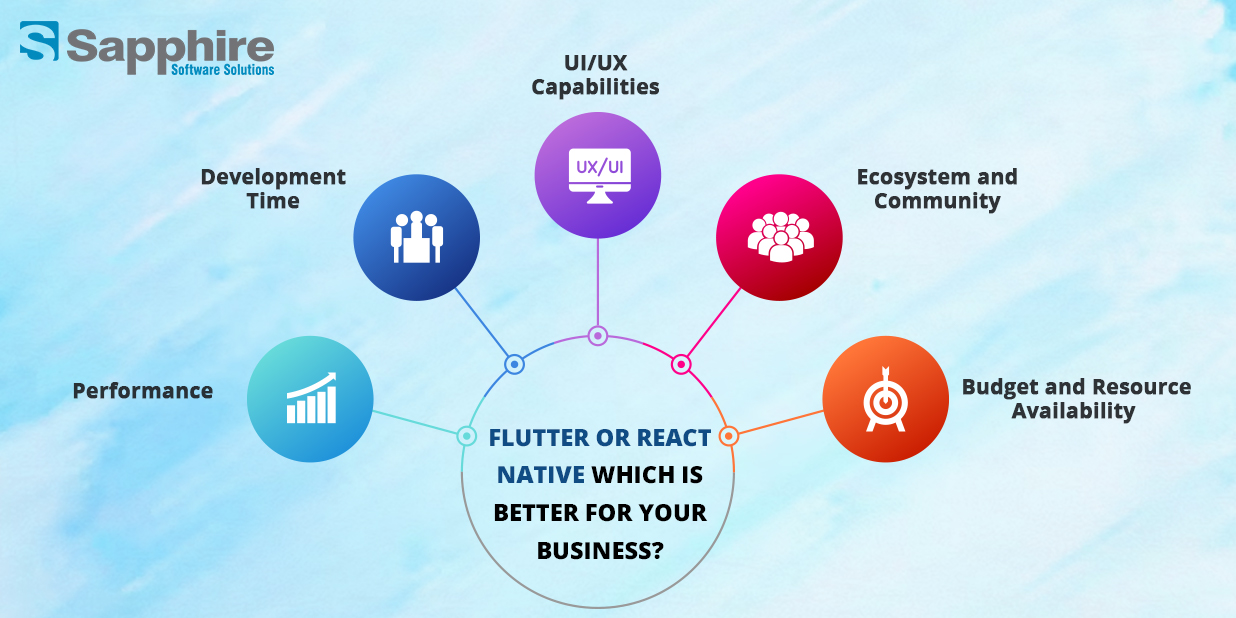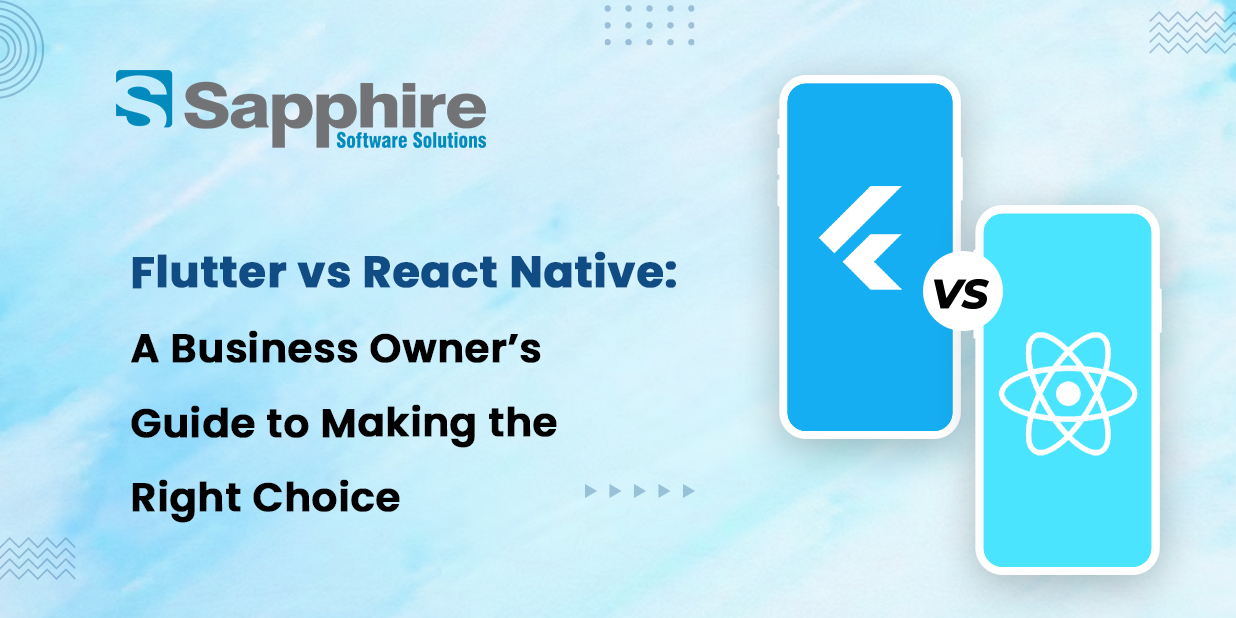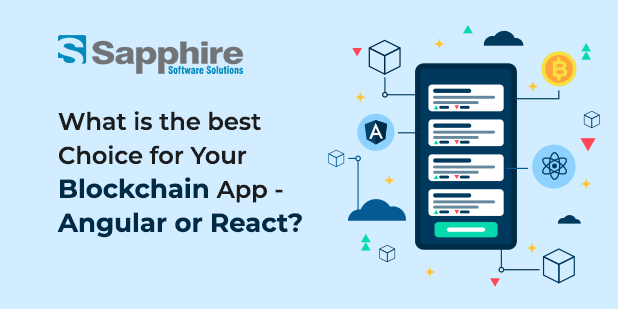You know what? Creating a mobile app for your company ought to be thrilling, not daunting. But I’d wager you’re there right now, perhaps with a coffee in hand, mulling over which framework to pick. Believe me, I’ve experienced that myself. The Flutter vs React Native debate has kept more business owners up at night than I care to count.
These two frameworks dominate conversations for one simple reason – they solve a massive headache. Think back to the past when you had to have different groups for iPhone and Android apps. It cost a lot, took forever, and let’s be real, it was a real headache to manage. Flutter or React Native changed all that by letting you build once and deploy everywhere.
But here’s where most guides fail you. They dive deep into technical specs while you’re sitting there thinking, “Will this help my business make money?” That’s the real question, isn’t it? Flutter or React Native: Which is better for growing your revenue, not just impressing developers? I’ve watched dozens of companies make this choice. Some nailed it, some didn’t. The difference? They focused on their business goals first, technology second. That’s exactly what we’ll do here.
What is Flutter App Development?
Three years ago, I watched a startup completely rebuild their app with Flutter. Why? Because their brand was everything to them, and their previous app looked different on every device. Flutter fixed that overnight.
Google put effort into building Flutter to address cross-platform app development challenges. Flutter is open-source and uses the Dart programming language. It allows developers to rely on one codebase to build apps for desktop, web, and mobile platforms.
Key Highlights:
- Backed and maintained by Google
- Built using Dart, a client-optimized language
- Rich library of custom widgets
- Native performance across platforms
What caught my attention wasn’t the technical specs – it was how Flutter handles consistency. Your app renders identically everywhere because Flutter doesn’t trust platform components. It draws everything itself using its rendering engine. Sounds excessive? Maybe. But when your brand depends on pixel-perfect presentation, excessive becomes essential.
I remember sitting with a Flutter App Development Company team, watching them make real-time changes with hot reload. Code change, instant preview. No recompiling, no waiting. The developer tweaked a button colour and boom – there it was. For businesses paying hourly rates, those saved minutes add up fast.
Flutter works exceptionally well for companies obsessed with their visual identity. Fashion brands, luxury services, design agencies – they love Flutter because it gives them complete creative control. Your app becomes an extension of your brand, not a compromise based on platform limitations.
Flutter’s performance stood out to me.
What is React Native App Development?
Last month, I met with a startup that needed their MVP ready in six weeks. Tight deadline, limited budget, existing JavaScript team. React Native was their obvious choice, and they shipped on time.
Meta built React Native to bridge web and mobile development. It uses JavaScript and React – technologies millions of developers already know. Smart move, considering the talent shortage in mobile development.
Key Highlights:
- Created by Meta and actively maintained by the open-source community
- Based on JavaScript and React
- Strong third-party ecosystem and plugin availability
- Code sharing across Android and iOS
What makes React Native different? Instead of drawing everything from scratch like Flutter, it uses native components from each platform. Your buttons look like iPhone buttons on iPhones, Android buttons on Android devices. Users feel at home immediately.
A good React Native App Development Company can leverage existing web development skills, which means faster hiring and lower costs. JavaScript developers are everywhere. Finding them next week? Easy. React Native’s track record speaks volumes. Airbnb used it for years before switching (they had specific performance needs). Shopify still uses it. Tesla’s app? React Native. Walmart’s mobile strategy? Built on React Native. These companies didn’t choose React Native by accident.
The flexibility impressed me most. When React Native hits performance limits, developers can drop down to native code for specific modules. It’s like having an escape hatch when you need maximum performance.
Flutter or React Native, which is better for your business?

1. Performance:
Flutter wins the pure speed contest, no contest. When it compiles to native code, there’s no JavaScript bridge creating bottlenecks. I’ve seen Flutter apps handle 60fps animations while comparable React Native apps struggled.
React Native performs well for most business apps. Social media, e-commerce, productivity tools – they work great. If your app depends on smooth animations or real-time interactions to succeed, Flutter Vs React Native speed shows that Flutter performs better.
2. Development Time:
This one’s tricky. React Native often gets you to market faster initially because JavaScript developers are abundant. Need someone tomorrow? You’ll find React Native developers before Flutter ones.
But experienced Flutter teams often build faster once they’re up to speed. The widget system and hot reload create incredible development velocity. I’ve watched Flutter teams prototype features in hours that took the React Native team days.
3. UI/UX Capabilities:
If your app’s visual identity matters, Flutter dominates. Period. I’ve seen companies choose Flutter solely for design control, and they were right. Every pixel, every animation, every interaction – you control it all. React Native follows platform conventions, which users appreciate but designers sometimes fight. Your app feels native, but achieving consistent branding across platforms requires extra work.
4. Ecosystem and Community:
React Native’s ecosystem is massive. Need a payment integration? There’s a library. Want analytics? Multiple options exist. The community has solved most problems already. Flutter’s ecosystem grows daily, but it’s smaller. Google’s investment helps, and the community is passionate, but you’ll occasionally need to build things from scratch. According to Flutter vs React Native Google Trends, Flutter’s popularity surge suggests this gap is closing fast.
5. Budget and Resource Availability:
React Native typically costs less upfront. JavaScript developers are cheaper and easier to find. For bootstrapped startups or companies with tight budgets, this matters. Flutter may be more expensive at first, but it may offer better value over time. The larger upfront cost often finds justification through better performance and design benefits in apps meant to earn money through user experience.
How Flutter & React Native Contribute to Hybrid App Development?
Although both frameworks are excellent at hybrid development, their methods are very dissimilar.
Flutter’s hybrid approach:
- Single rendering engine across all platforms
- Custom widget-based UI system
- Identical user experience everywhere
- Perfect for apps requiring consistent branding
React Native’s hybrid approach:
- Platform-native components throughout
- Traditional hybrid development methodology
- Easy integration with existing native code
- Ideal for apps embracing platform conventions
The Flutter vs React Native Architecture difference is fundamental. Flutter operates independently of platform UI components, giving you consistency but requiring more custom work. React Native leverages platform strengths, providing familiarity but sometimes sacrificing consistency.
For hybrid app development, I recommend Flutter when brand consistency and performance matter most. Choose React Native when development speed and platform integration are priorities.
Pros and Cons of Flutter and React Native Apps:
Let me give you the unvarnished truth about both:
Flutter Pros:
- Exceptional UI/UX design capabilities
- Hot reload for rapid development
- Compiles to native code, ensuring high performance
- Expanding support for web and desktop
- Backed by Google with a growing community
Flutter Cons:
- Dart is still niche, so hiring talent can be tough
- Fewer third-party packages than React Native
- Larger app sizes compared to some native builds
React Native Pros:
- JavaScript and React-based — easy to hire developers
- Strong community and extensive libraries
- Can use native code where needed
- Mature platform with widespread adoption
React Native Cons:
- Performance lags in animation-heavy apps
- UI inconsistencies due to reliance on platform components
- Occasional dependency on outdated third-party modules
By comparing Flutter vs React Native statistics, it’s revealed that Flutter is growing fast in popularity. Surveys on developer satisfaction often rank Flutter better due to its performance, flexible design options, and ease of development.
My recommendation? Choose Flutter if you’re building something innovative and design-focused. Pick React Native if you need proven technology with abundant resources.
How Sapphire Can Help You with Flutter or React Native?
Choosing the framework is just step one. Finding developers who understand your business goals? That’s the real challenge.
We’ve been through this rodeo before. At Sapphire Software Solutions, we’re top top-rated Flutter App Development Company. We’ve helped startups burn through their runway on the wrong technology choices. And also helped enterprises scale apps to millions of users by picking the right approach from day one. We’ve seen projects succeed and fail with both technologies. More importantly, we’ve learned what separates successful apps from expensive failures.
Our services include:
- End-to-end app development
- Flutter and React Native consulting
- UI/UX strategy and execution
- Backend integration and API development
- Continual assistance, regular updates, and efforts to optimize performance.
We don’t push specific technologies. Instead, we analyze your business model, user needs, timeline, and budget. Then we recommend the approach that maximizes your chances of success. Want an honest conversation about your project? Request a free quote to see what works best in your unique situation.
Conclusion:
Choosing Flutter vs React Native isn’t about picking the “best” option. It’s about matching the technology to suit your business goals. Need blazing performance and pixel-perfect design? Flutter probably fits. Want to move fast with readily available talent? React Native makes sense.
But here’s what matters most: execution trumps technology every time. I’ve seen mediocre teams build disappointing apps with great frameworks. I’ve also seen talented teams create amazing experiences with both Flutter and React Native.
The real question is not whether Flutter or React Native is better. It is about deciding which suits your goals, timeline, team, and budget. Are you prepared to choose? Sapphire Software Solutions can help you navigate this decision based on real-world experience, not theoretical comparisons. Contact us today for a free quote, and let’s build something that moves your business forward.






































